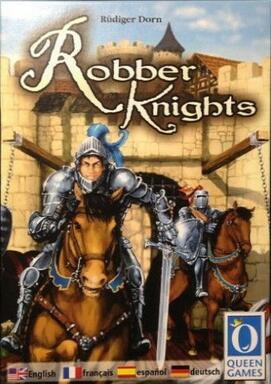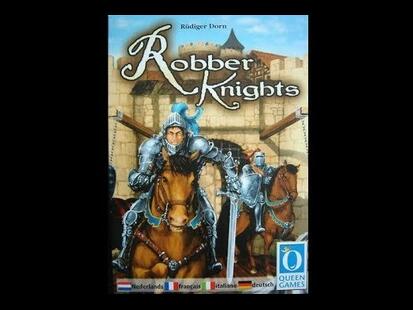Among the feudal lords, internal struggles were being prepared: soon the knights would leave their castles to take control of as many surrounding towns and villages as possible. In turn, a player can place one of the 2 tiles he has in his hand (then complete his hand), up to 3 times. Only the first tile installation is required. A tile can be a fortified castle (whose control is worth 1 point at the end of the game), a village (2 points), a city (3 points), a plain, a forest, a mountain or a lake. The playing area where tiles can be placed is limited (square of 7 tiles by 7 to 2 players, 8x8 to 3 and 10x10 to 4).
When a castle is placed, the player brings back up to 5 knights (a player has a stock of 30 knights in all) which he can move in a straight line on the adjacent tiles, and only at the time he places the castle.
For travel, he must leave at least 1 knight on the plains, 2 on the forests and 3 on the mountains. Lakes cannot be crossed. If other knights arrive later in the game on the same tile, they overlap (respecting the terrain constraints), and only the counter on top will determine who controls the tile. There can be no more than 4 knights on the same tile.
The one who controls the most points (castle, village and town) at the end of the game (when all tiles have been placed) wins.
Rule, Educational Sheet ... 2 Files Available2 Files Available
Download the rule for Robber Knights or any other documents (scenarios, goodies, pedagogical sheet, erratum, ...). 2 PDF files are available. See all available files
Contents of the box : 96 field plates, 120 knights counters.





